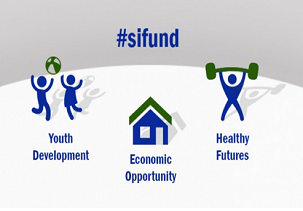Playing Moneyball Through the Social Innovation Fund

The Federal government is playing Moneyball through a program that relies on evidence of success and private-sector matching funds: the Social Innovation Fund (SIF). Using a limited federal investment to catalyze private dollars and a focus on building strong evidence over time, the SIF is spreading promising, community-based solutions that will improve outcomes for young people and their families in more communities of need.
The SIF tackles challenges in the areas of economic opportunity, youth development, and health –helping move the needle on issues including childhood obesity, financial opportunity, homelessness, and literacy, among others.
How does the SIF work?
The SIF sends federal grants – often in relatively small amounts – to promising nonprofits that are selected through a competitive process. The nonprofits then go out and find private matching funds at a rate of 3-to-1, private-to-federal, to execute their programs. Through the SIF, the Federal government is helping identify promising solutions, supporting their efforts to build evidence about “what works,” and is helping spread “what works” to other communities, guaranteeing better results and a better return of investment on taxpayer dollars.
Since its inception in 2009, the SIF has leveraged more than $400 million from non-federal resources and $177.6 million in federal resources to reach more than 200,000 people.
Tags: Federal, SIFAs the Obama Administration continues to encourage federal agencies to use evidence in formulating budget requests and to build new evidence about “what works,” programs like the SIF show how the federal government can be a good steward of taxpayer dollars while supporting promising social change across the country.


